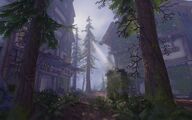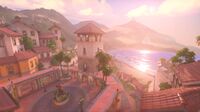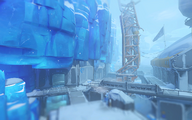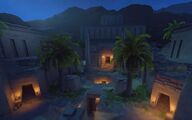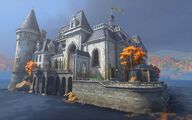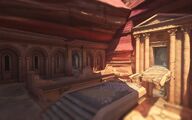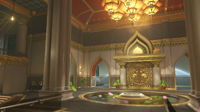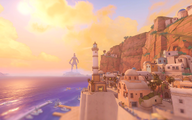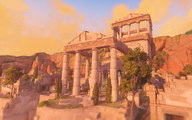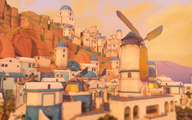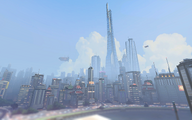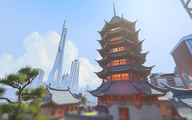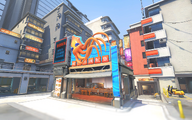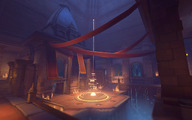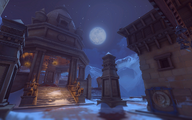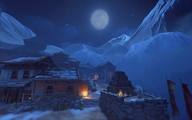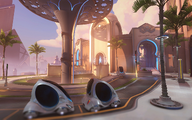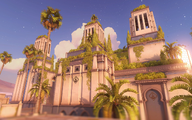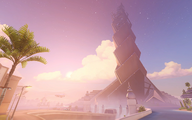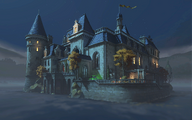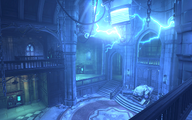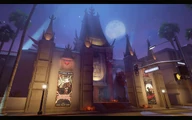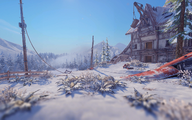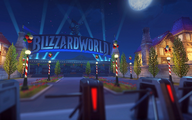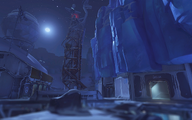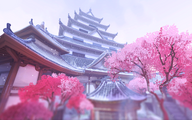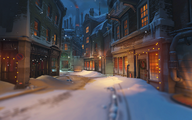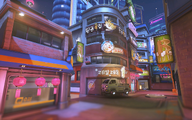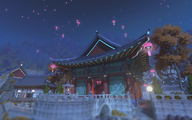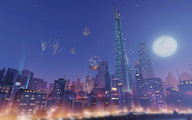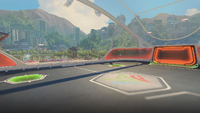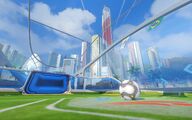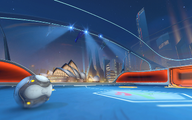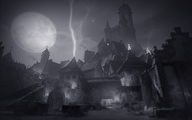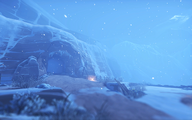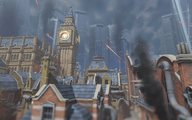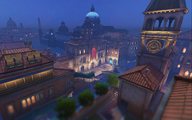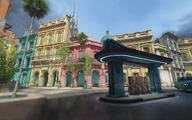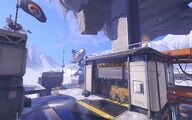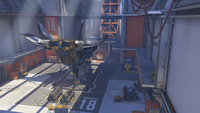Lightning Laxus (talk | contribs) mNo edit summary |
Lightning Laxus (talk | contribs) mNo edit summary |
||
| Line 23: | Line 23: | ||
* [[Hanamura]] |
* [[Hanamura]] |
||
* [[Temple of Anubis]] |
* [[Temple of Anubis]] |
||
| − | * [[Volskaya Industries]] |
+ | * [[Volskaya Industries]] |
===[[Escort]]=== |
===[[Escort]]=== |
||
Revision as of 03:09, 24 December 2019
Overwatch features several different maps based on locations, both fictional and real, around the world.
Standard Play
There are currently 21 maps available for standard gameplay: 5 Assault maps, 6 Escort maps, 5 Hybrid maps, and 5 Control maps. These are the maps used for Quick and Competitive Play and are the biggest maps in Overwatch.
Starting from Season 19, only three maps per mode are available in Competitive Play at a time, rotating each season.
A new map type for the Push game mode is set to launch alongside Overwatch 2 for both Overwatch and Overwatch 2.
Assault
 Gothenburg (unreleased)
Gothenburg (unreleased)
Assault maps have two rectangular areas that the attackers must capture: Objective A and Objective B. Objective A is between the attacker and defender spawn rooms, and Objective B is in front of the defender spawn room. In total, Assault maps have three spawn rooms (two attackers, one defender). After Objective A is captured, the second attacker spawn room is opened up next to it. The defender spawn room stays the same throughout the game. A common feature for Assault maps is that Objective A is often very tight with a narrow choke while Objective B is more open.
Season 19 Assault maps:
Escort
Escort maps have a payload that the attackers must escort across three checkpoints. The payload is located next to the attackers' first spawn room. In total, Escort maps have six spawn rooms (three attackers, three defenders). Attacker and defender spawn rooms change every time a checkpoint is reached, with the new attacker spawn room being right next to the captured checkpoint and the new defender spawn room moderately behind the next checkpoint.
Season 19 Escort maps:
Hybrid
Hybrid maps are a mixture of Assault and Escort maps. There is an Objective A for attackers to capture, and after it is captured, attackers must escort a payload across two checkpoints. Sometimes the payload exists as a part of the Objective (Eichenwalde, Hollywood, Numbani) and sometimes it needs to be unlocked (Blizzard World, King's Row). The distance between Objective A and the first checkpoint is slightly longer than the distance between the first checkpoint and the second. What is interesting about Hybrid maps is the number of spawn rooms is inconsistent. There are three attacker spawn rooms for each stage and there is a defender spawn room for Objective A; however, some maps have only one defender spawn room for the two payload stages (King's Row, Numbani) while others have a spawn room for each (Blizzard World, Eichenwalde, Hollywood).
Season 19 Hybrid maps:
Control
Control maps are unique because they are essentially three different smaller maps that all co-exist in one larger area. Unlike the other standard game modes, both teams are attackers and there is one spawn room for each team, for each stage, located at each end of the map. Right at the center of the map is a large rectangular or circular area that the teams must capture and control. Control maps are by default symmetrical. Since the three stages are all very different from each other, Control maps offer the most variety in team compositions and strategies.
Season 19 Control maps:
Push
 Toronto (unreleased)
Toronto (unreleased)
Push maps are the newest additions to Overwatch, set to release with Overwatch 2. They are symmetrical with a robot at the center of the map. Each team has a block that the robot has to push to their respective ends, but only 1 team can control the robot at a time and the opposing team has to take control of the robot to push their own block. Each team's progress is independent of the other's. Upon having the robot push the block to a checkpoint, that team's spawn room changes. The team that reaches the end point, or with the furthest progress at the end of the match, wins.
Unknown
 Monte Carlo (unreleased)
Monte Carlo (unreleased)
 Rio de Janeiro (unreleased)
Rio de Janeiro (unreleased)
 ??? (unreleased) [1]
??? (unreleased) [1]
These maps have been announced but their game modes are unknown.
Arcade
There are currently 7 maps made specifically for the Arcade.
Elimination
Elimination maps, or Arena maps, are small, symmetrical maps with a spawn room at each end. They are designed for intense straightforward combat. They are also used for 1v1 Duels.
Deathmatch
Deathmatch maps are unique because they have no spawn room. They are designed to accommodate as many fighting styles as possible. While other maps are also used, maps that are specifically designed for Deathmatch have a period in the Arcade where they are the only map played in FFA Deathmatch; these maps are the only ones available for Competitive Deathmatch.
Capture the Flag
Capture the Flag maps are large, symmetrical maps with a spawn room at each end. Near each spawn room is the flag area with a flag that the other team must steal and bring to their own area. While other maps are also used, maps that are specifically designed for Capture the Flag have a period in the Arcade where they are the only map played in Capture the Flag.
Arcade Maps Derived from Control Maps
When Assault, Escort, or Hybrid maps are added to the Arcade, they are cropped for Deathmatch. When Control maps get added to the Arcade, for Deathmatch and also Capture the Flag since they are symmetrical, the stages are split into maps of their own and are given a new time of day.
Ilios
Lijiang Tower
Nepal
Oasis
Seasonal Variations
During seasonal events, some maps are redesigned and decorated to fit the theme. The normal versions of these maps are still available.
Halloween Terror
Winter Wonderland
Lunar New Year
Seasonal Brawls
Brawls during seasonal events also have modified maps, usually exclusive to that brawl.
Summer Games—Lúcioball
Lúcioball has its own unique maps. They are a simple field inside a transparent stadium. Scattered along the field are launching pads and Lúcio can wallride on the sides of the stadium. Each team has a goal at each end that the other team's Lúcio must knock the ball into. All stadiums have an announcer that speaks in the native language.
Halloween Terror—Junkenstein's Revenge
Junkenstein's Revenge is set in the fictional city, Adlersbrunn, which is a modified nighttime version of Eichenwalde.
Winter Wonderland—Mei's Snowball Offensive
Mei's Snowball Offensive have highlighted piles of snow around the map that are used for Mei's snowballs; they spawn randomly. Unlike the other brawls, this brawl's maps are not exclusive to it and can be accessed through regular Elimination.
Winter Wonderland—Yeti Hunt
Yeti Hunt's version of Nepal Village has one end that spawns a team of Meis and the other end a cave that spawns a Yeti (Winston). If a Mei dies, or if the Yeti falls off the map, they return to their respective spawn area. Scattered along the map are meat stations that the Yeti must collect; the meats recharge over time.
Overwatch Archives—Uprising
Uprising features a daytime version of King's Row from six years ago, after it was taken over by the omnic terrorist group, Null Sector.
Overwatch Archives—Retribution
Retribution features a nighttime version of Rialto from seven years ago, during the Blackwatch mission that began the downfall of Overwatch.
Overwatch Archives—Storm Rising
Storm Rising features a stormy version of Havana from six years ago, when Overwatch agents chased Maximilien with an oncoming hurricane.
Other maps
These maps are used for learning the game. In them, there are training bots.
Development
Part of the map design process is to go over all the pre-existing maps, and ascertain which areas of the world have yet to receive representation. Some assets are shared between maps.[2] It takes two months on average to create a map, though is usually playable within the first two. After that, iteration is constantly carried out before it ships.[3] Payload maps take the longest to design due to the amount of art required, while arena maps can be completed the fastest.[4]
Cut maps
Trivia
See also
References
- ↑ 2019-11-02, Blizzard 2019 Overwatch: Evolving the Art Panel.
- ↑ 2017-01-10, Overwatch Devs Reveal Oasis' New Lore And Secrets. Game Informer, accessed on 2017-02-19
- ↑ 2018-05-07, David Adams on Twitter. Twitter, accessed on 2018-05-17
- ↑ 2018-05-08, David Adams on Twitter. Twitter, accessed on 2018-05-17


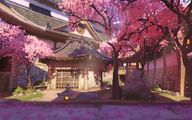
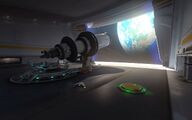
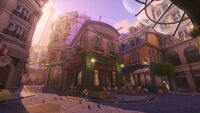
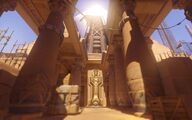
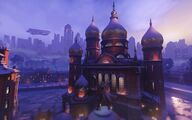
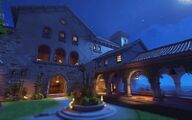
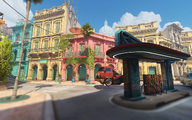
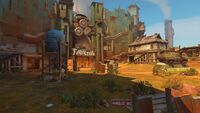
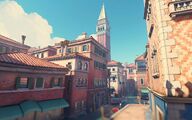
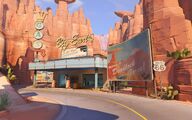
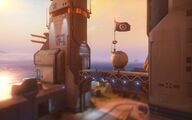
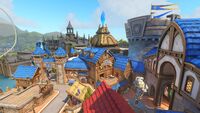
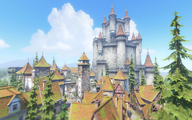
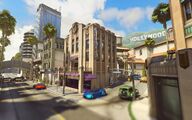
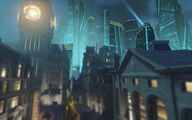
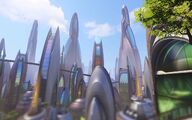
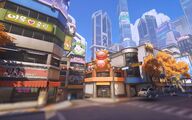
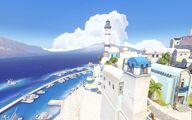
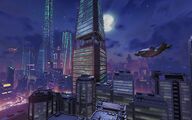
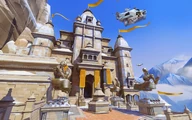
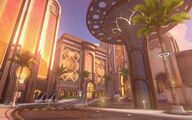
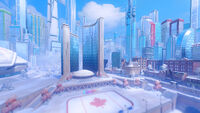
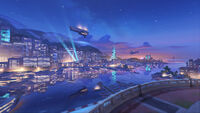

![??? (unreleased) [1]](https://static.wikia.nocookie.net/overwatch_gamepedia/images/3/3a/Unknown_map.png/revision/latest/scale-to-width-down/200?cb=20191104001542)
